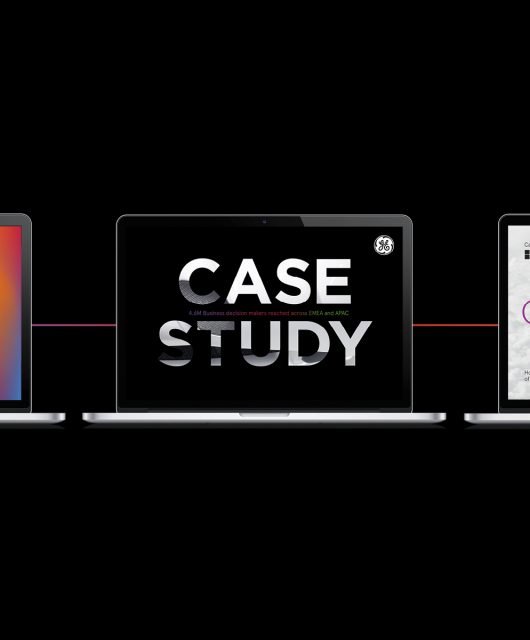Managing Brands’ Reputations: Q&A With Americana’s Mai El Kinawi
Brands are constantly challenged with a diverse magnitude of crises that erupt from the evolving market dynamics and consumer needs . Some brands are able not only to survive a crisis but also navigate it into a PR win, emerging stronger than ever, while others are destroyed, forced into a merger or even an exit. Between brand familiarity and brand favourability, lies their ability to leverage these crises. The Brandberries has exclusively interviewed Mai El Kinawi, Director of Corporate Communications at Americana Group, for her take on building brands’ reputations.
BB: Reputation is considered one of the brand’s most valuable assets. One of the core areas where brands and PR cross paths is reputation management. How can PR professionals help brands build a solid and credible reputation?
 MEK: Indeed, Reputation is one of the most valuable assets of a brand / organization. It takes years to build and could be washed away in a single moment. Reputations are built based on continuous dialogue with stakeholders, excellence in customer service, and well-prepared crisis planning. That dialogue may not always be intentional or overt; but is inferred from all the touch-points, interactions and communication emanating to and with the brand.
MEK: Indeed, Reputation is one of the most valuable assets of a brand / organization. It takes years to build and could be washed away in a single moment. Reputations are built based on continuous dialogue with stakeholders, excellence in customer service, and well-prepared crisis planning. That dialogue may not always be intentional or overt; but is inferred from all the touch-points, interactions and communication emanating to and with the brand.
Protecting our Reputation is one of the two primary reasons why we communicate during a crisis. A key, and often overlooked element of crisis preparedness is the importance of constantly investing in “good will” with stakeholders. Every touch-point between the brand and any of its stakeholders is an opportunity to build reputation and feed the ‘good will’ account (similar to an emotional bank account), on which we can then draw on in times of crisis.
To do so, all our communicators (leaders, marketeers, PR, sales, HR) should be seamlessly working together towards a common reputation. Unfortunately, without a pre-defined corporate communication strategy with all these internal stakeholders, internal misalignment becomes one of the biggest pitfalls of crisis management.
When all communicators within an organization buy into this idea of reputation being a collective objective, and hence work collaboratively to build and protect this asset, we harness the strengths of the whole, and are well-positioned to face a crisis.
BB: Many brands are faced with crises that can give a hard blow to their reputation. Effectively managing crisis when it arises can become a make it or break it to any brand. Can you give us some insights on what are the pillars of an effective crisis management strategy?
MEK: The most important pillar of managing a crisis is being prepared for a crisis. Preparation is Key. A common mistake is neglecting the importance of crisis preparation and hoping that you will be able to manage the crisis smoothly, when it happens. Simply put, that is never the case. How well prepared you are, is more often than not, the defining factor of how well the crisis is managed.
Pillars of effectively responding to a crisis:
- Be Prepared
In brief, crisis preparedness involves having a defined process in place with set protocols, having a well-trained crisis team, and being aware of the environment around you – monitoring.
To use a common analogy – team sports: crisis management relies very heavily on how well the team ‘play’ together. In preparedness, it is crucial that the crisis team is a ‘well-oiled’ team and have practiced crisis management together, often. Hence the importance of simulation training, crisis drills and refresher sessions; regardless of the frequency of crises; training and preparedness is key.
- Be Decisive
Crisis management is NOT a democratic process. Critical to the crisis management process is acknowledging the fact that there is ONE crisis leader, who will be responsible and accountable for all decisions during the crisis.
- Be Authentic
Simply put, do not lie. Being transparent and honest is the best approach. Empathy is also a critical factor in best-in-class crisis communications.
- Timing
As they say: “timing is of the essence”. During a crisis, responding at the ‘right’ time is key. I use the term ‘right’ intentionally, because it includes speed and accuracy; not just immediately responding. Having said that, communicators and leaders need to be aware of the pace of today’s environment; and must time their responses as such.
- Review
After-activity reviews are an essential part of the crisis management process. The outward-facing element of a crisis may end with the resolution of a crisis situation, however leaders and communicators have one more crucial step: Review. A crisis is one of the best learning experiences for communicators and leaders alike. Investing the time in properly assessing how the crisis was managed and identifying areas of improvement or reaffirming the process are just as important as the pre-crisis preparedness.
BB: The digital transformation age has given reputation and crisis management a whole new dimension. Reputations can be affected negatively with one single social media post. In a nutshell, what are the dos and don’ts when handling virally blasted crisis?
MEK: Social media and technology have changed the rules of the game. Today everyone with a mobile phone is literally a walking news source; regardless of whether the news they are sharing is true, fake or a half-truth. These new rules are not only confined to social media, as a channel, but have a spill-over effect on ‘traditional media’ as well. As an example, the pace with which stories develop and hence responses are expected by journalists is quicker than ever before.
While the strategies of managing crisis remain fundamentally the same, the tactics of executing them are different, and are constantly changing. It is crucial for crisis communicators and leaders to always be in-tune with the changing digital environment, and be flexible in adapting to the new landscape, quickly.
Do’s:
- Be timely in your response
- Be empathetic to those impacted by the situation
- Be honest – do not lie
- If you’ve made a mistake, admit it
Don’ts:
- Don’t judge
- Don’t place blame on others
- Don’t alienate your partners, stakeholders or customers
- (specific to social media) Don’t delete messages that you don’t like, or show you in an undesirable view
BB: Brands work in different cultural contexts. Does cultural differences affect crisis management?
MEK: In short, YES. But before we delve into why or how, it is important to define Culture.
Culture is a complex mix of habits, beliefs, practices, religions, history, politics and economics, to name a few. We’ve been taught to look at countries from the lens of geography; and at products & services from the lens of an industry label. However, when dealing with a crisis, the communication needs to zoom in on the cultural nuances of the audience – the stakeholders; particularly their emotions and how they are impacted by that incident.
This mesh of emotions with facts is what makes crisis uncomfortable for many organizations – governments, corporations, brands and people. To some, it is the most feared business instance. To others, it is an opportunity to strengthen their reputation, their connection with their stakeholders and to re-emphasize the values behind their brands / identity.
Within the Middle East, the Arab Spring was a pivotal point in crisis communications. Some of the key shifts include changing the stakeholder spectrum from a relatively limited group – Media, to a completely open group – The Public. This in turn changed the dialogue from a relatively unilateral conversation, to and from, to a web of conversation within the ecosystem. The constituents within the ecosystem, now communicate quicker, with more depth and under more scrutiny.
Hence, cultural nuances, geo-politics and public sentiment within the ecosystem, are key enablers to successfully navigating through a crisis.





